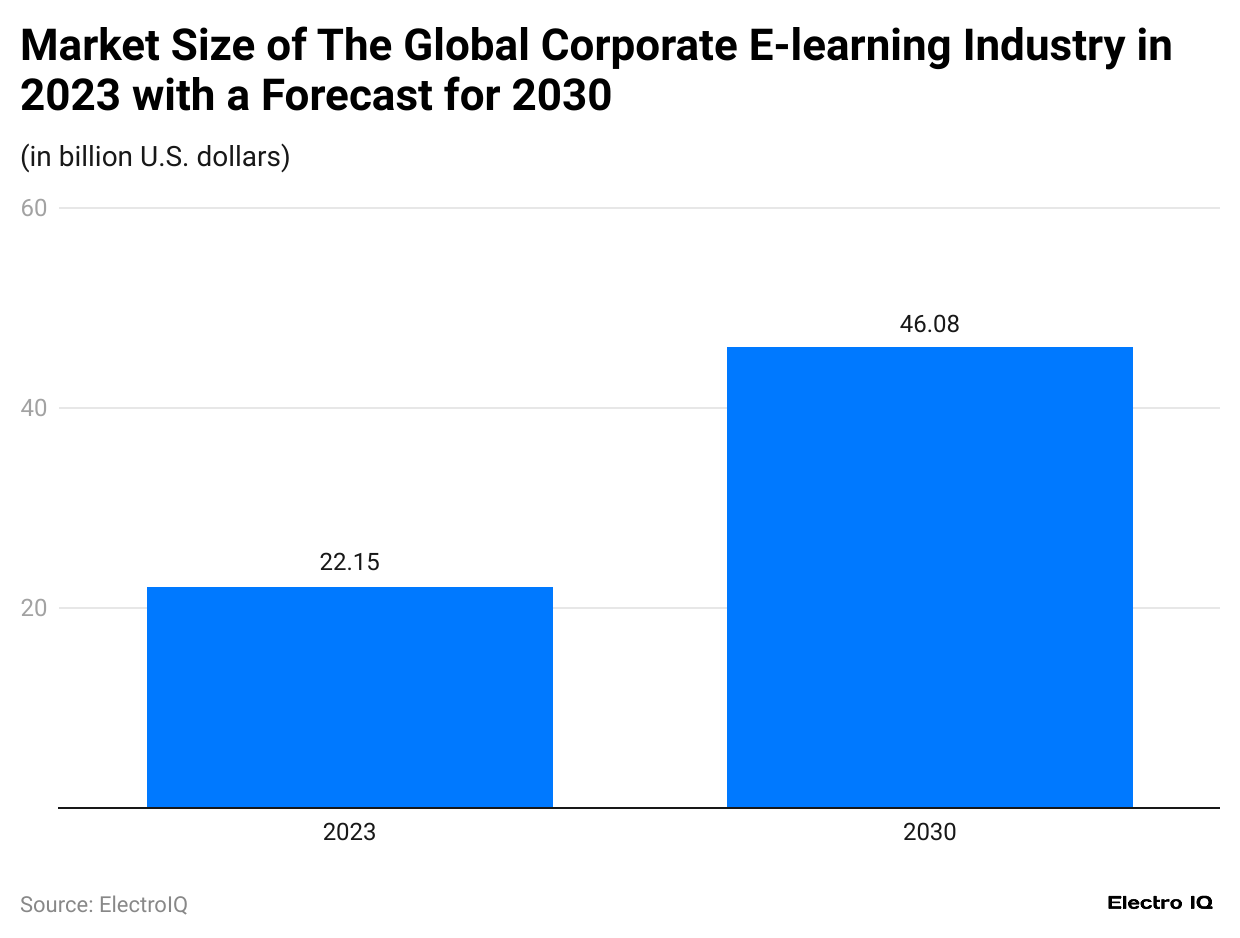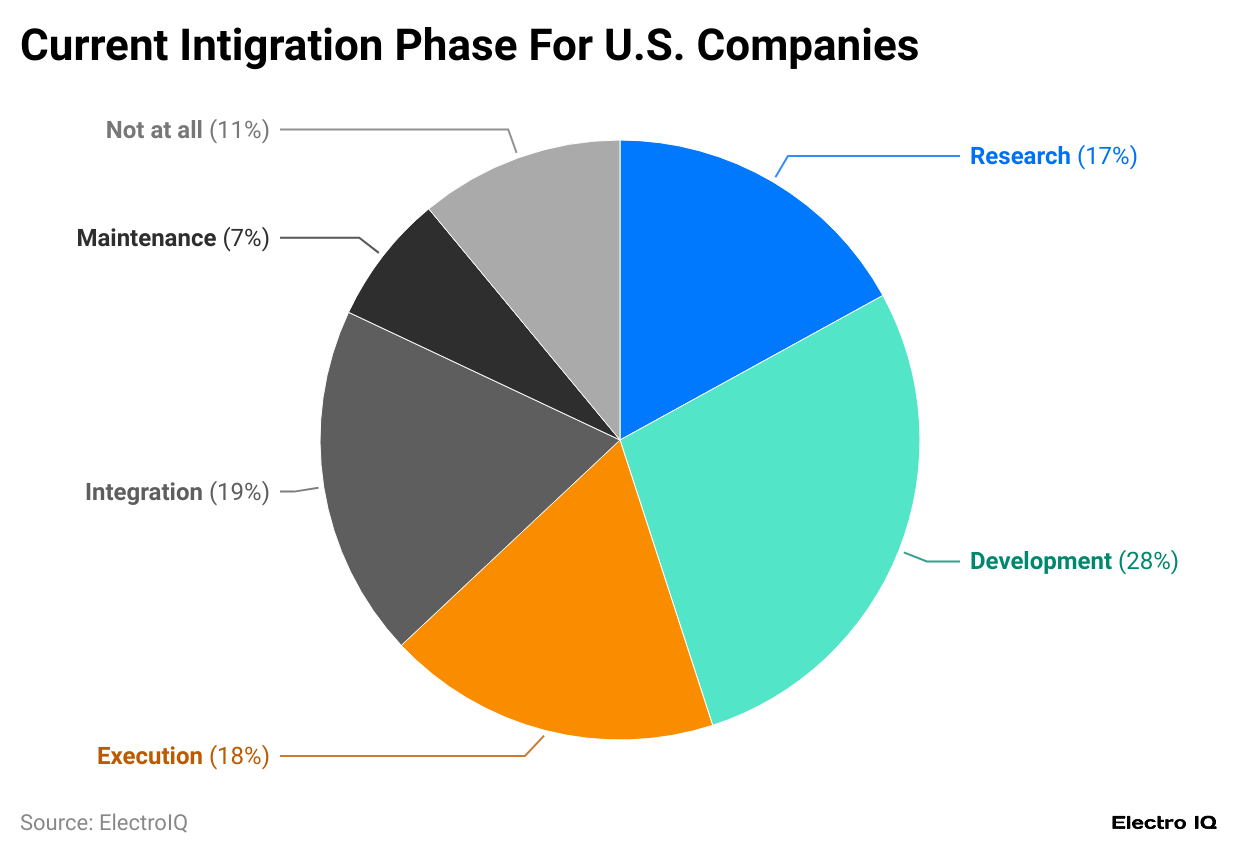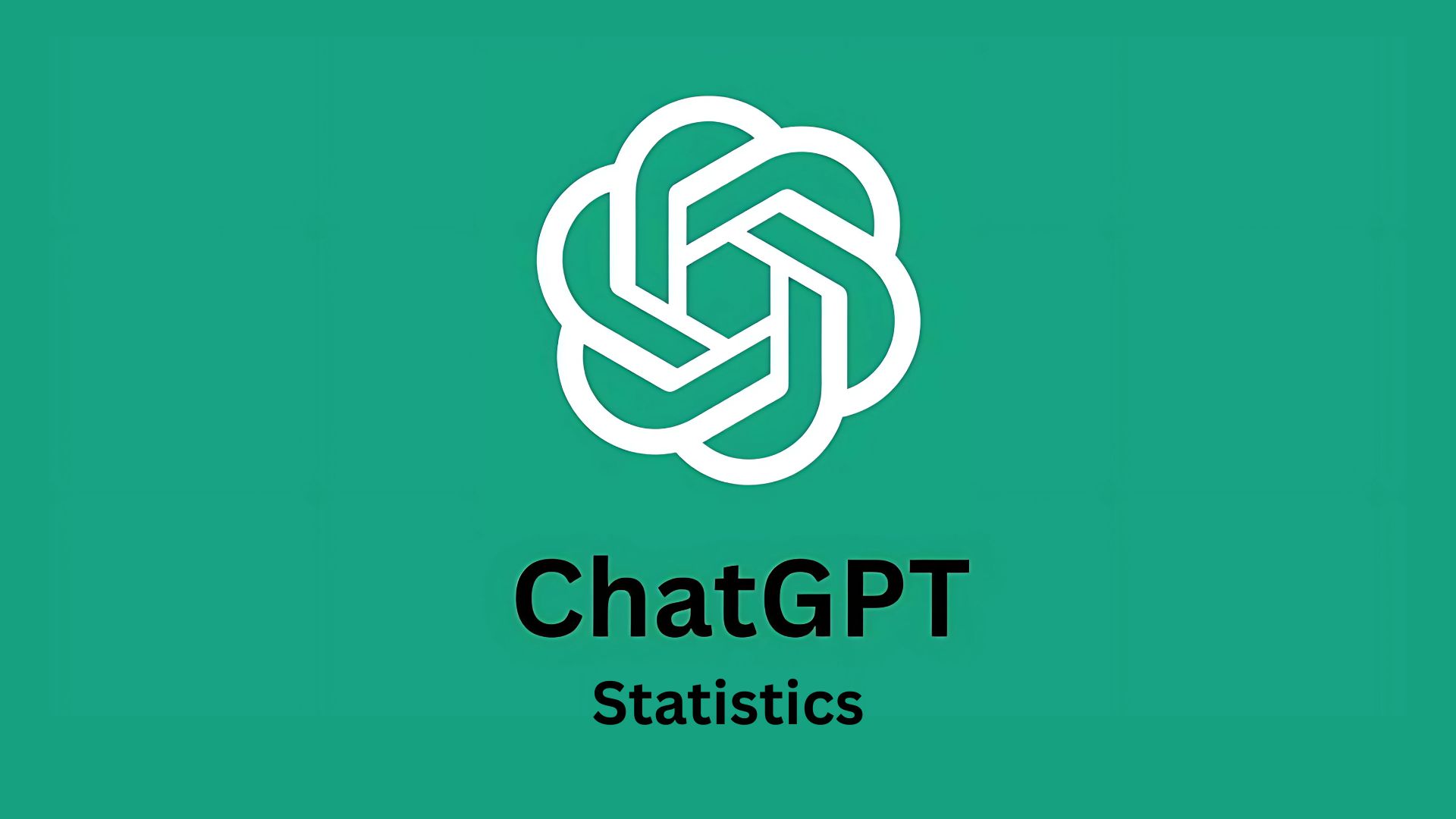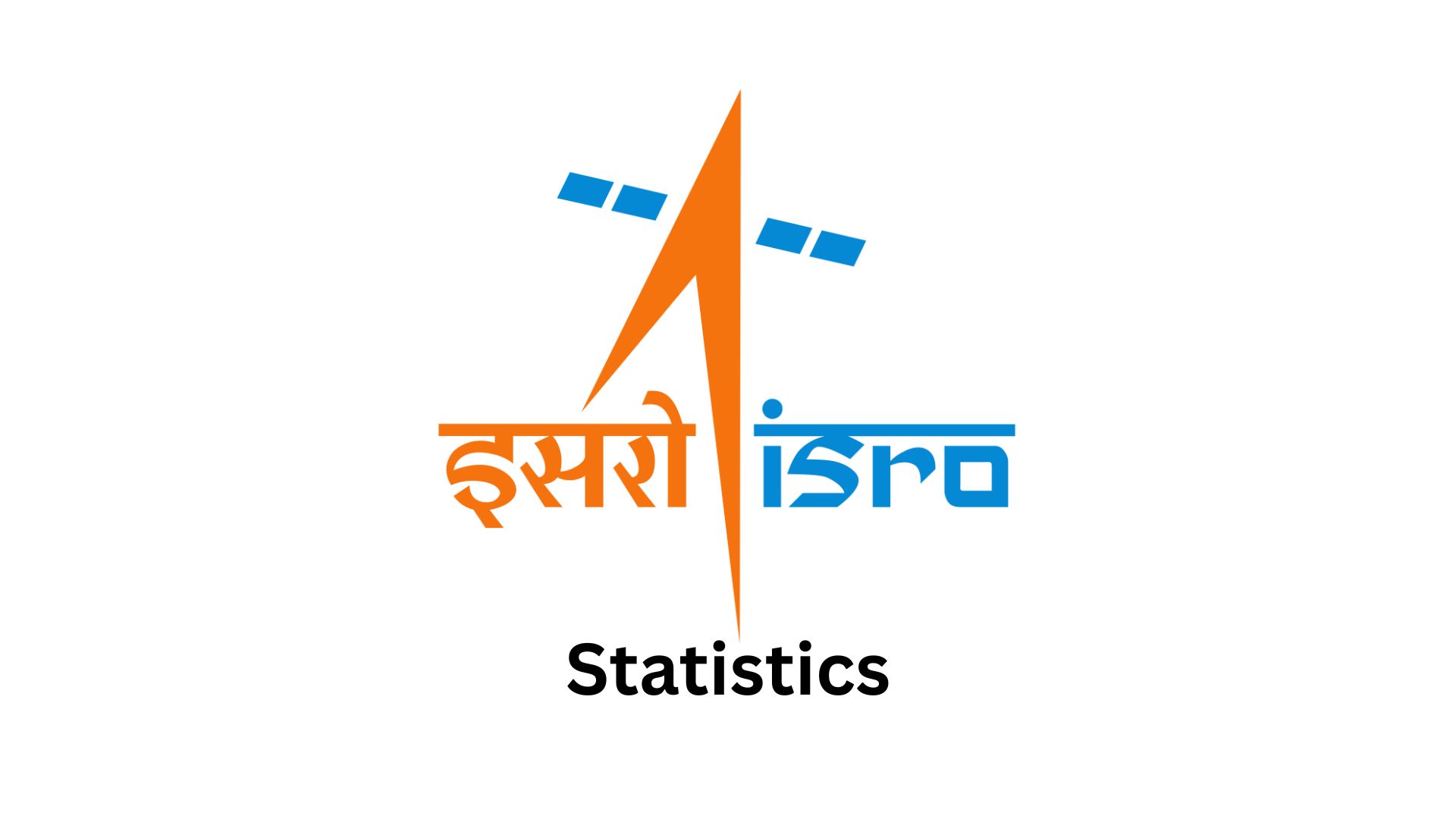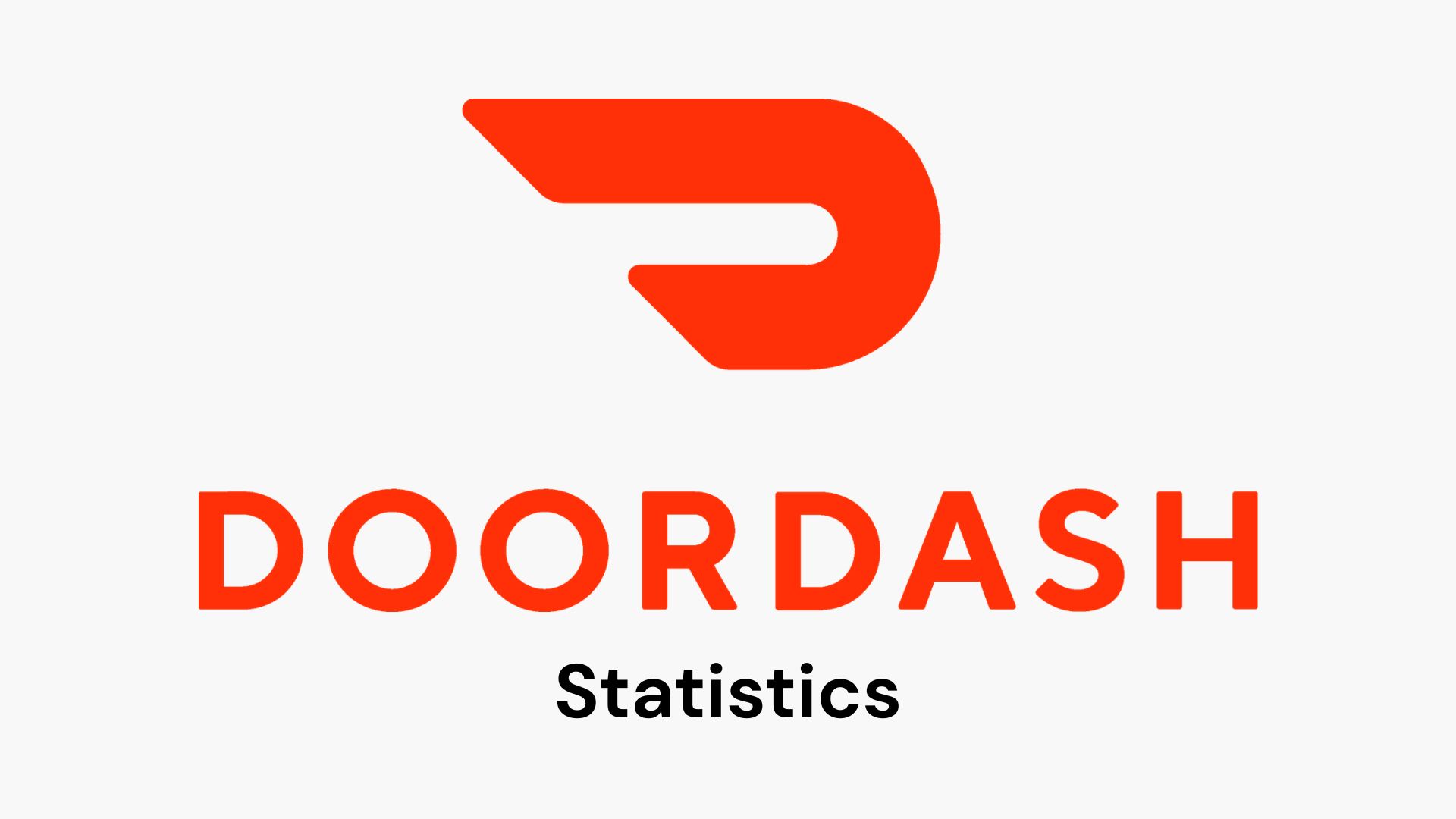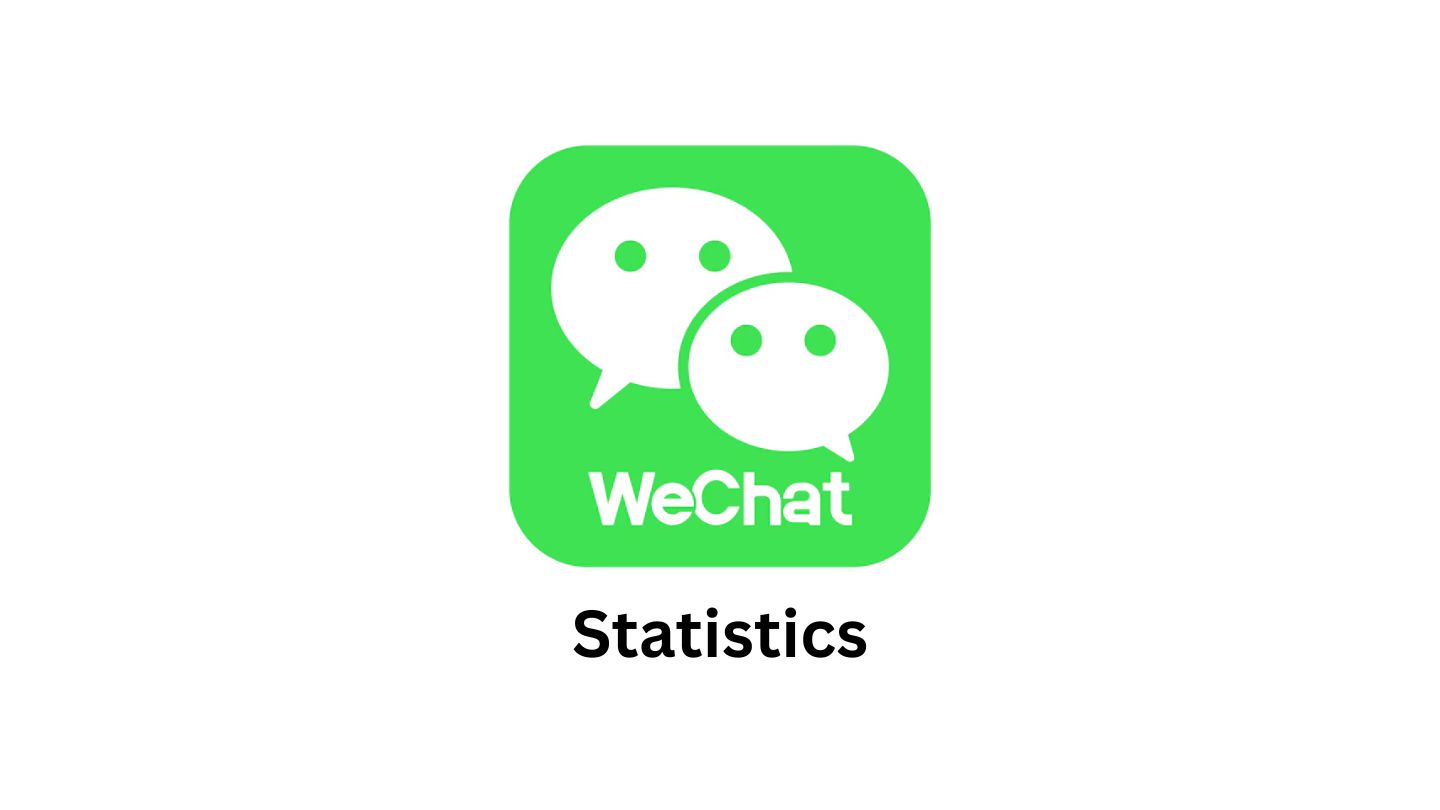Digital Transformation Statistics By Spending, Market Size, Company Initiative and Facts
Updated · Dec 12, 2024

Table of Contents
- Introduction
- Editor’s Choice
- Digital Transformation Market
- Digital Transformation Spending
- IT Spending Worldwide
- Digital Competitiveness Ranking
- Global IT Spending By Segment
- E-learning Industry Market Size
- Employees Working in Remote Settings
- Share of Employees Working Remotely
- Factors Preventing Digital Transformation
- Generative AI Adoption By Region
- Objectives for Digitising Business Operations
- Company Strategies For Skill Gap
- IT Skills Demand With AI Rise
- Data and Analytics Investment State
- Company Initiative on Digital Transformation
- Digital Integration Phase For US Companies
- Digital Transformation Challenges
- Conclusion
Introduction
Digital Transformation Statistics: Digital transformation involves the strategic integration of advanced technologies, such as artificial intelligence (AI), hybrid cloud solutions, and big data analytics, into business operations to enhance productivity and efficiency. This concept has become a vital component of corporate strategy, especially since the onset of the COVID-19 pandemic, which accelerated the shift towards more agile, technology-driven business practices.
As of 2023, global spending on digital transformation initiatives reached a significant USD 1.85 trillion, reflecting a 16% increase from the previous year. This surge in investment largely results from the growing demand for technologies that support remote work environments, with cloud solutions leading the way. In fact, over 90% of organizations worldwide have adopted cloud technologies, making it the most commonly implemented solution globally. Public cloud spending alone has surpassed USD 560 billion.
Despite these substantial investments, the success rate of digital transformation projects remains low, with only about one-third of initiatives achieving their intended goals. The adoption of generative AI technologies exemplifies this challenge; approximately one-third of global organizations had implemented such solutions by 2023, with that figure slightly higher in North America at 40%. These technologies play a crucial role in enabling intelligent decision-making and enhancing customer interactions through personalization and automated services.
However, the complexity and cost of implementing AI present significant obstacles, particularly for smaller organizations with limited resources. This situation highlights the necessity for businesses to carefully evaluate their digital transformation strategies to effectively leverage new technologies while addressing the associated challenges and cybersecurity risks.
Editor’s Choice
- The Global Digital Transformation Market is expected to expand from USD 829.5 billion in 2023 to USD 8,567.4 billion by 2033.
- IT spending worldwide is expected to achieve USD 5747 billion by 2025.
- The United States scores a perfect 100 in digital competitiveness.
- 67.75% of employees in the technology sector are working remotely.
- 40% of North American organizations have implemented AI.
- For 55% of companies, driving growth is the primary objective of digital transformation.
- Investments in data analytics are prioritized by 9% of organizations.
- The e-learning industry is forecasted to expand to USD 46.08 billion by 2030.
- AI and machine learning skills are deemed crucial by 80% of respondents.
- 56% of companies identified digital transformation as a top priority in 2021.
- 28% of US companies are currently in the digital integration development phase.
- 50% of companies are emphasizing cybersecurity initiatives.
- An additional 2% of businesses are boosting their investments in data and analytics.
- Building internal capabilities is a focus for 43% of companies.
- 74% view data analytics and big data as essential skills.
- 74% of organizations regard digital transformation as a top priority.
- 97% acknowledge that the COVID-19 pandemic accelerated their digital transformation efforts.
- 77% have commenced their digital transformation journey.
- Only 35% of digital transformation efforts are considered successful.
Digital Transformation Market
- The Global Digital Transformation Market is projected to grow from USD 829.5 billion in 2023 to USD 8,567.4 billion by 2033, with a compound annual growth rate (CAGR) of 26.3% from 2024 to 2033.

- By 2023, digitally transformed entities are expected to contribute over 50% of the global GDP, which translates to approximately USD 53.3 trillion.
- 97% of companies reported an accelerated pace of digital initiatives due to the COVID-19 pandemic, emphasizing the urgency of digital adaptation for business continuity and resilience.
- Digital transformation has become a higher priority than cybersecurity and cloud implementation for 73% and 65% of organizations, respectively.
- 69% of IT decision-makers view digital transformation as essential for enhancing process efficiency and operational effectiveness.
- Despite the high investment in digital transformation, only 35% of organizations report successful outcomes, indicating the presence of significant implementation challenges.
- 74% of Chief Supply Chain Officers (CSCOs) consider hybrid cloud integration critical for the digital transformation of supply chains.
- Workplace transformation is believed by 86% of organizations to significantly improve collaboration among teams.
- In specific market components, solutions dominated with a 69.7% share in 2023, driven by the demand for digital business solutions.
- In terms of deployment mode, on-premise solutions held a 63.9% share in 2023, favored for their data security and customization benefits.
- Big Data & Analytics led the technology segment with a 30.1% share in 2023, fueled by the growing amount of data across sectors.
- Large enterprises were the primary drivers of digital transformation, accounting for a 61.5% market share in 2023.
- The BFSI sector was the leading end-use industry with a 27.4% revenue share in 2023, driven by needs for enhanced customer experience and regulatory compliance.
- North America emerged as the leading region with a market share of 41.9% in 2023, supported by advanced digital infrastructure and widespread adoption of technologies.
Digital Transformation Spending
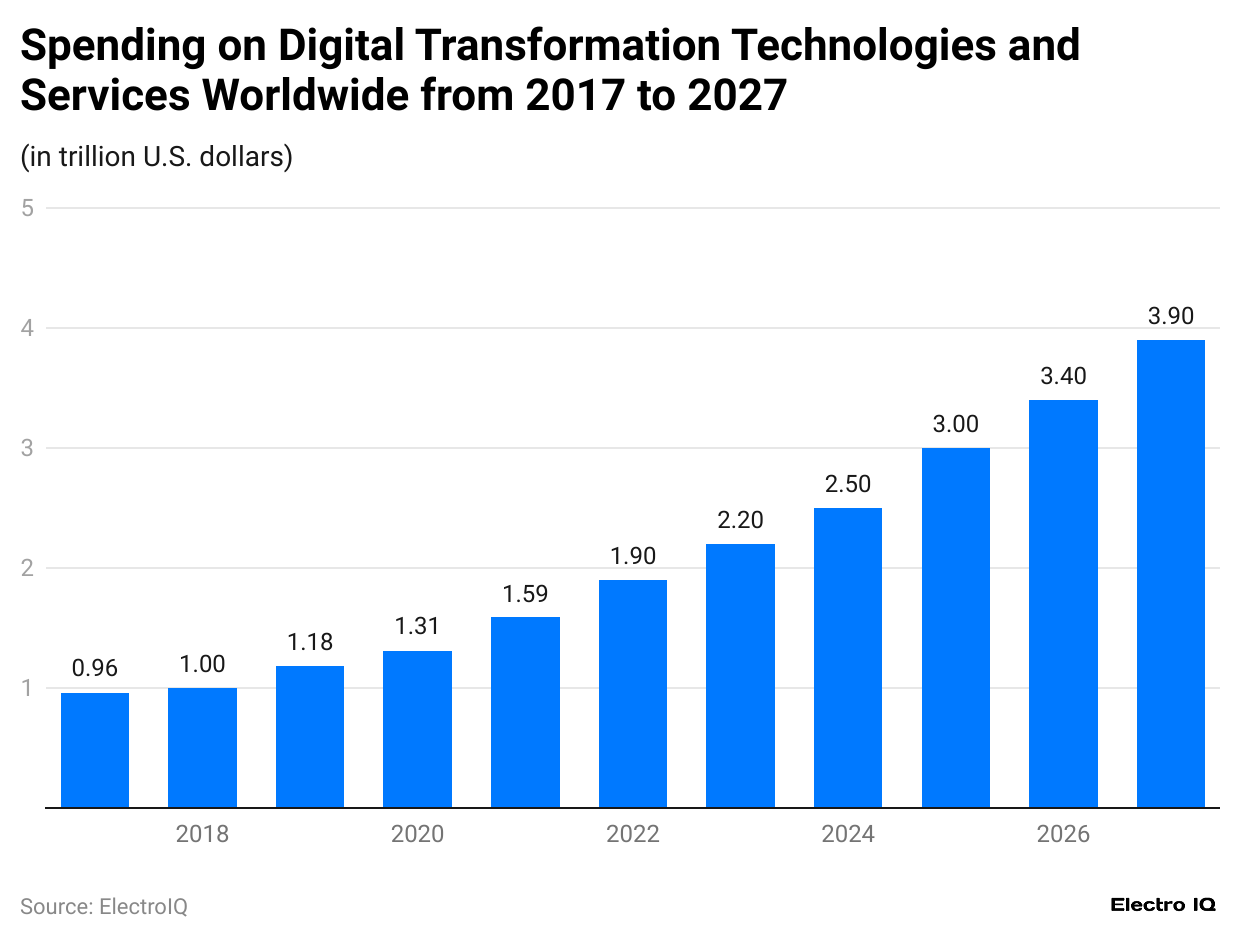
(Reference: statista.com)
- Digital Transformation Statistics show that spending on digital transformation technologies has increased consistently.
- In 2017, the digital transformation spending was 0.96 Trillion USD.
- By the end of 2023, the digital transformation technologies spending was 202 Trillion USD.
- By the end of 2027, digital transformation spending was estimated to be 3.9 Trillion USD.
IT Spending Worldwide
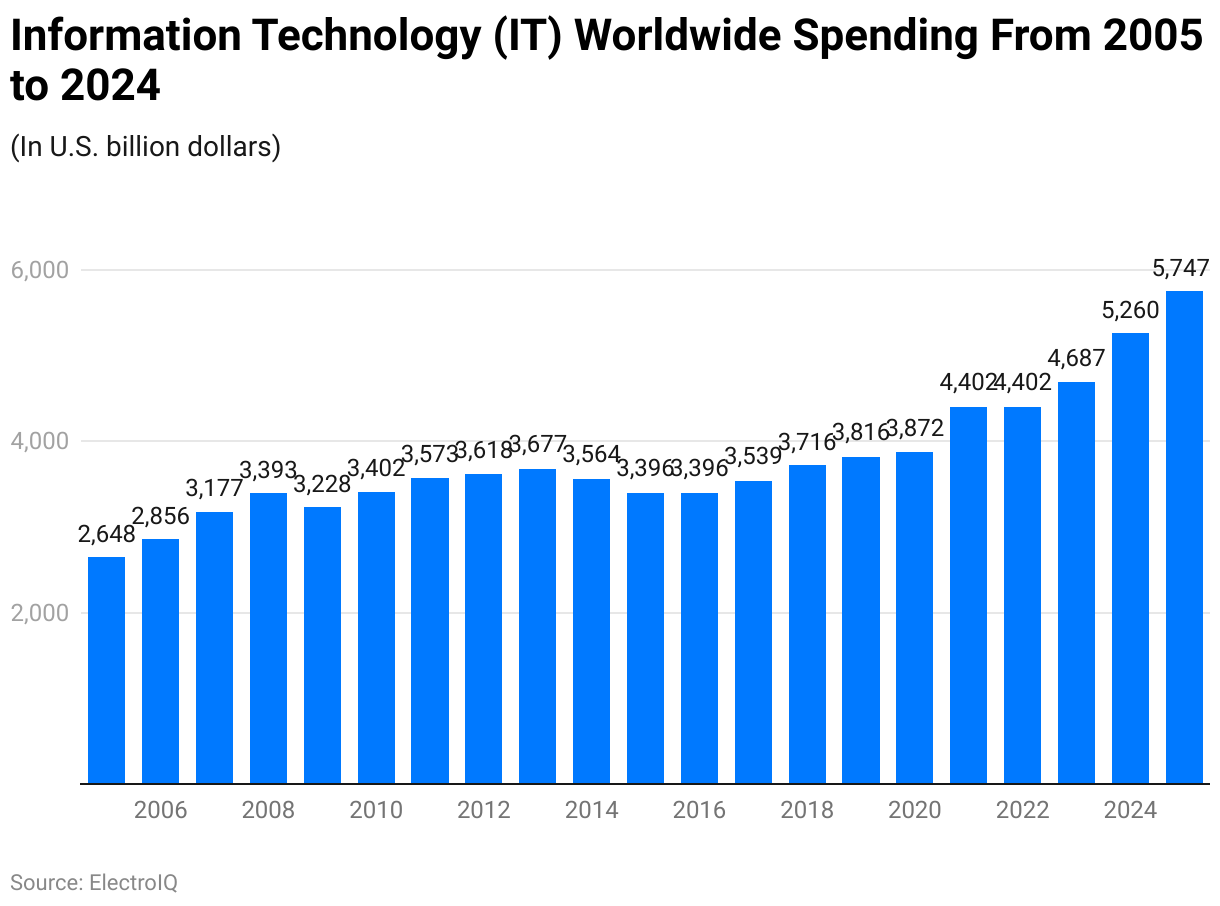
(Reference: statista.com)
- Digital Transformation Statistics show that worldwide spending on information technology has increased consistently over time.
- In 2005 the IT spending was 2648 billion.
- As of 2023, IT spending has increased to 4687 billion USD.
- It is estimated that by the end of 2025, IT will spend 5747 billion USD.
Digital Competitiveness Ranking
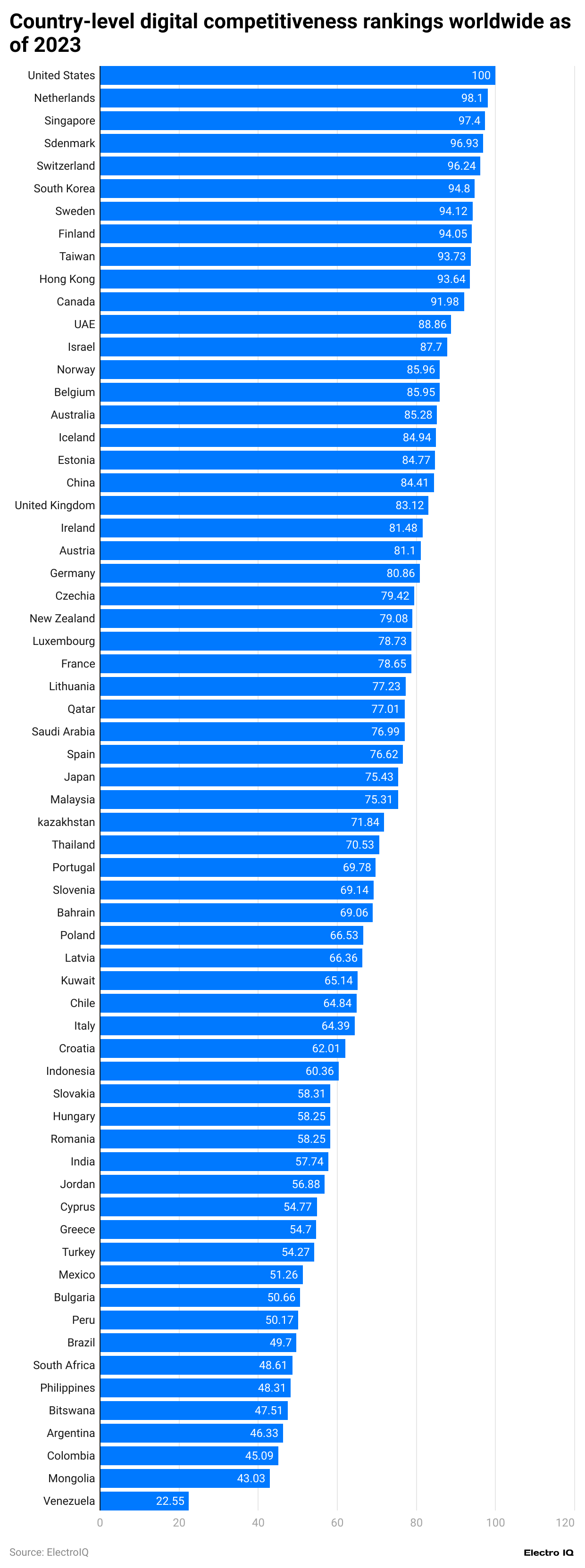
(Reference: statista.com)
- United States holds the top position in global digital competitiveness for 2023 with a perfect score of 100.
- Netherlands follows closely with a digital competitiveness score of 98.1.
- Singapore is ranked third with a score of 97.4.
- Previously leading in 2022, Denmark is now fourth, scoring 96.93.
- Switzerland secures the fifth place with a score of 96.24.
- South Korea and Sweden are in sixth and seventh places with scores of 94.8 and 94.12, respectively.
- Finland closely trails with a score of 94.05.
- Taiwan and Hong Kong rank eighth and ninth, with scores of 93.73 and 93.64 respectively.
- Canada makes the top ten with a score of 91.98.
- UAE stands at eleventh with 88.86.
- Israel rounds out the list with a digital competitiveness score of 87.7.
Global IT Spending By Segment
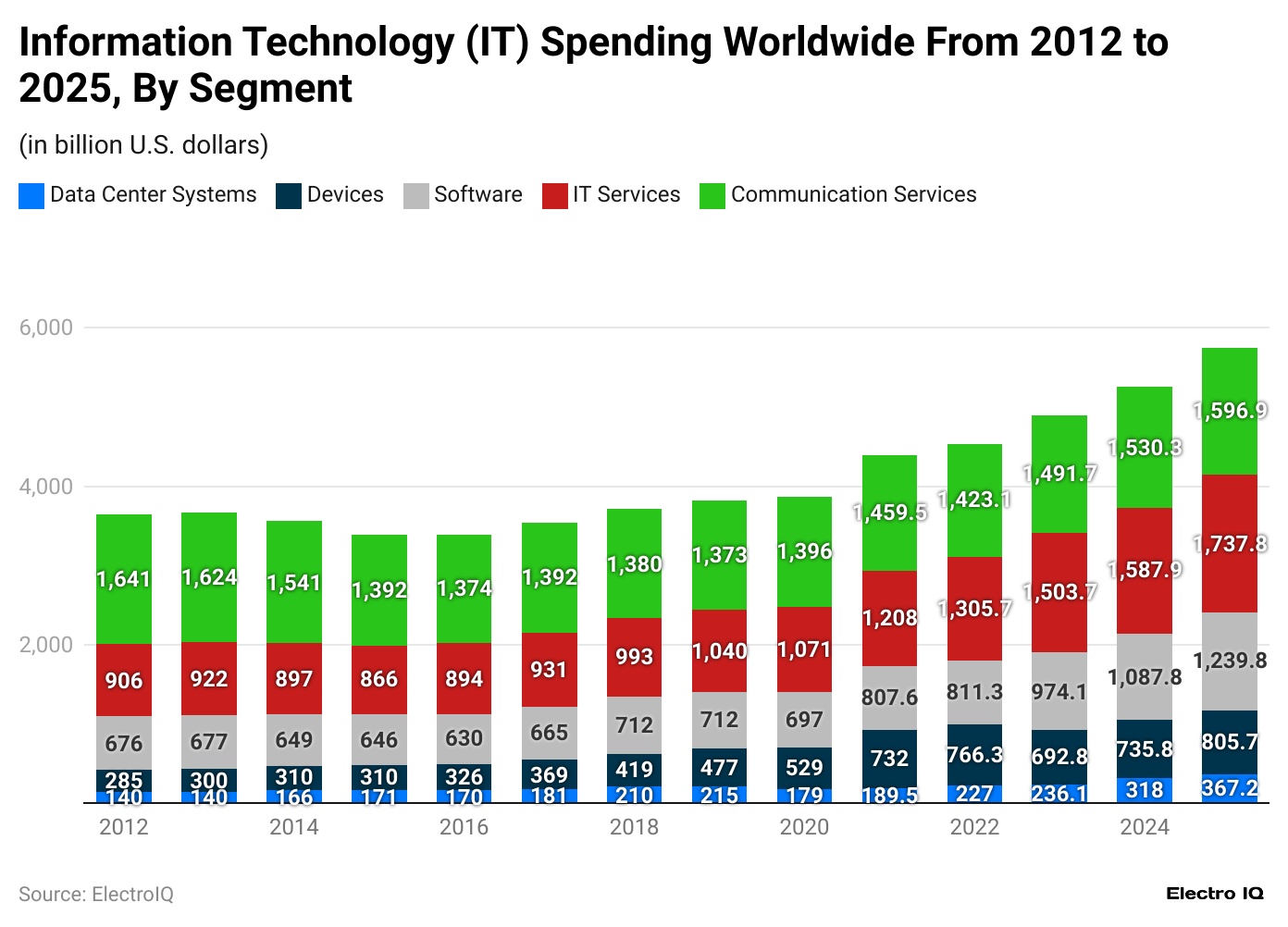
(Reference: statista.com)
- Digital Transformation Statistics show that the IT industry has different segments, including communication services, IT services, devices, data center systems, and software.
- In 2012, Communication Services was 1641 billion USD.
- As of 2023, the IT services are 1530.7 billion USD.
- By the end of 2025, IT services are predicted to be the highest at USD 1737.5 billion.
E-learning Industry Market Size
(Reference: statista.com)
- Digital Transformation Statistics show that the e-learning industry is increasing consistently over time.
- In 2023, the global e-learning industry was 22.15 billion USD.
- By the end of 2030, it is predicted that the e-learning industry will be 46.08 billion USD.
Employees Working in Remote Settings
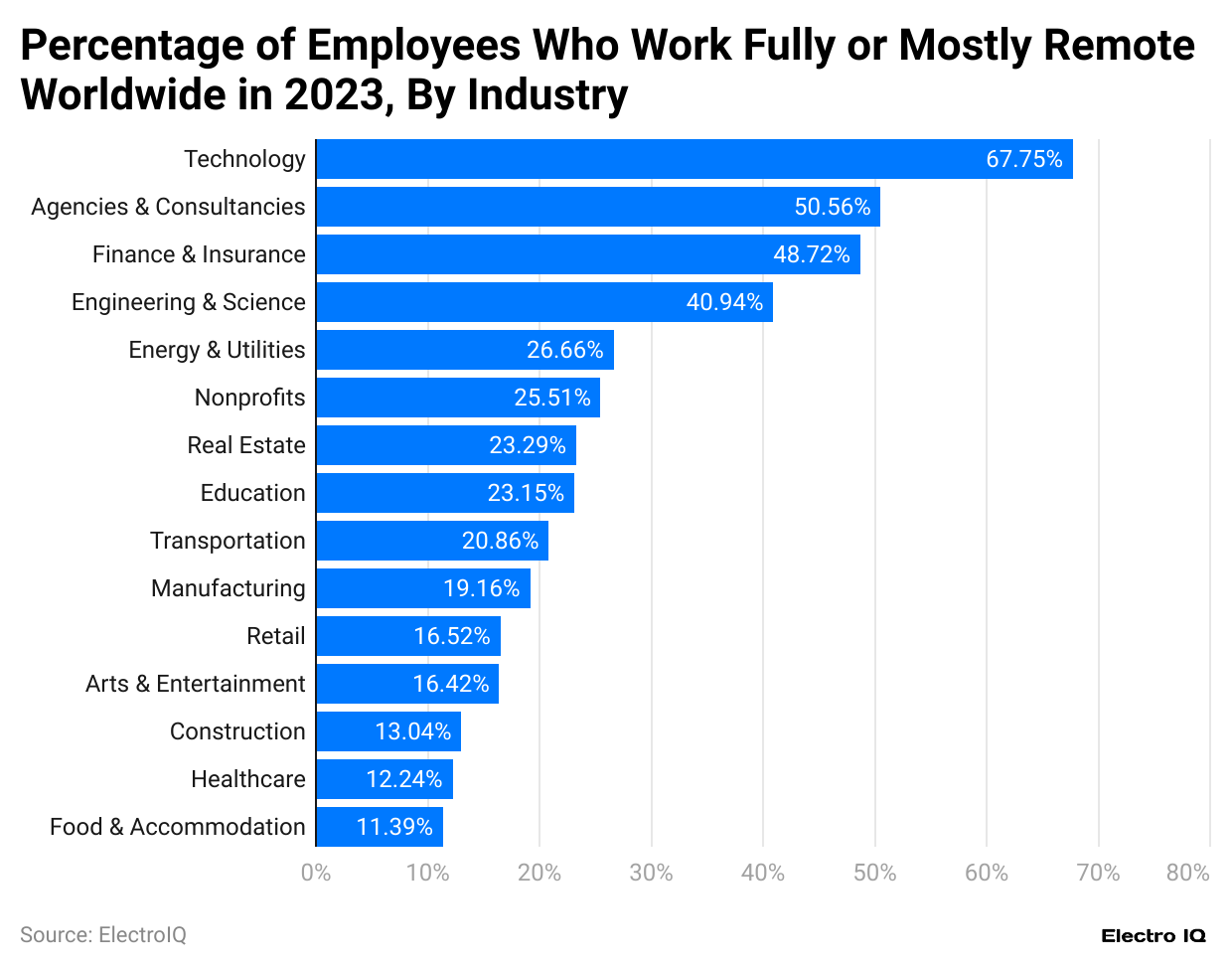
(Reference: statista.com)
- The technology sector leads in remote work adoption with 67.75% of respondents indicating employees work in remote settings.
- Agencies and consultancy sectors report 50.56% of their workforce operating remotely.
- The finance and insurance sector sees 48.72% of its employees working remotely.
- Engineering and science professionals working remotely constitute 40.94%.
- Energy and utilities have 26.66% of their workforce in remote settings.
- Nonprofits feature 25.51% of employees working remotely.
- Remote work is practiced by 23.29% of those in the real estate sector.
- Education sector’s remote workforce stands at 23.15%.
- Transportation involves 20.86% of employees working remotely.
- Manufacturing reports 19.16% of its workforce as remote.
- In retail, 16.52% of employees work remotely.
- Arts and entertainment sectors have 16.42% of their workforce in remote settings.
- Construction sees 13.04% of its employees working remotely.
- The healthcare sector has 12.24% of its workforce operating remotely.
- Food and accommodation sectors report 11.39% of employees working remotely.
(Reference: statista.com)
- Digital Transformation Statistics show that the percentage of employees working remotely increases consistently over time.
- In 2015, 7% of employees worked from home.
- In 2020, due to the pandemic, the number of employees who work from home increased to 13%.
- As of 2023, according to 28% of respondents are those who work from home.
Factors Preventing Digital Transformation
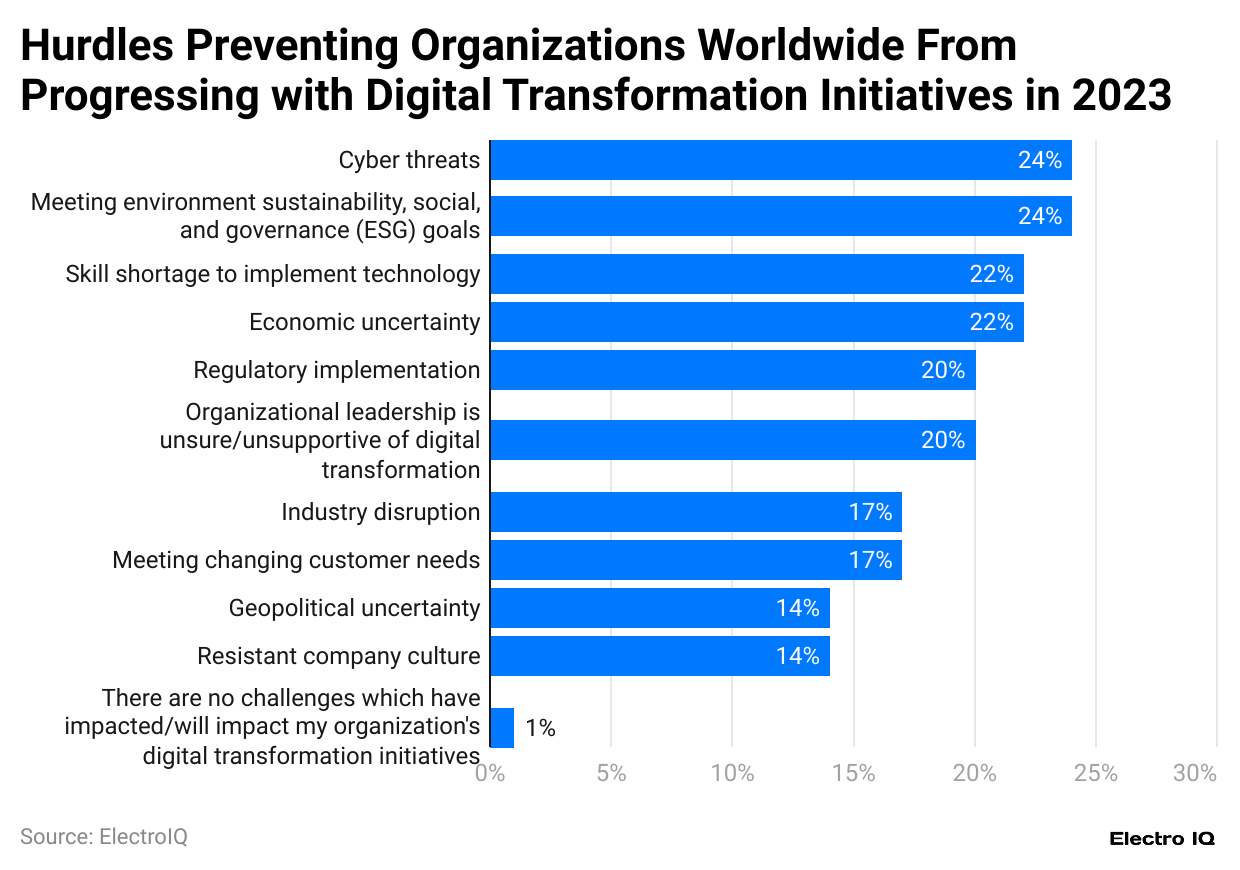
(Reference: statista.com)
- Digital Transformation Statistics show that cyber threats and environmental sustainability goods are the major hurdles against digital transformation initiatives, according to 24% of respondents.
- Skill shortage and economic uncertainty are hurdles against digital transformation, according to 22% of respondents.
- Regulatory implementation and lack of leadership support are barriers to digital transformation, cited by 20% of respondents.
- Industry disruption and evolving customer needs pose challenges for digital transformation, as noted by 17% of respondents.
- Geopolitical uncertainty and resistance to cultural change hinder digital transformation efforts, as reported by 14% of respondents.
- A lack of challenges impacting digital transformation was reported by 1% of respondents.
Generative AI Adoption By Region
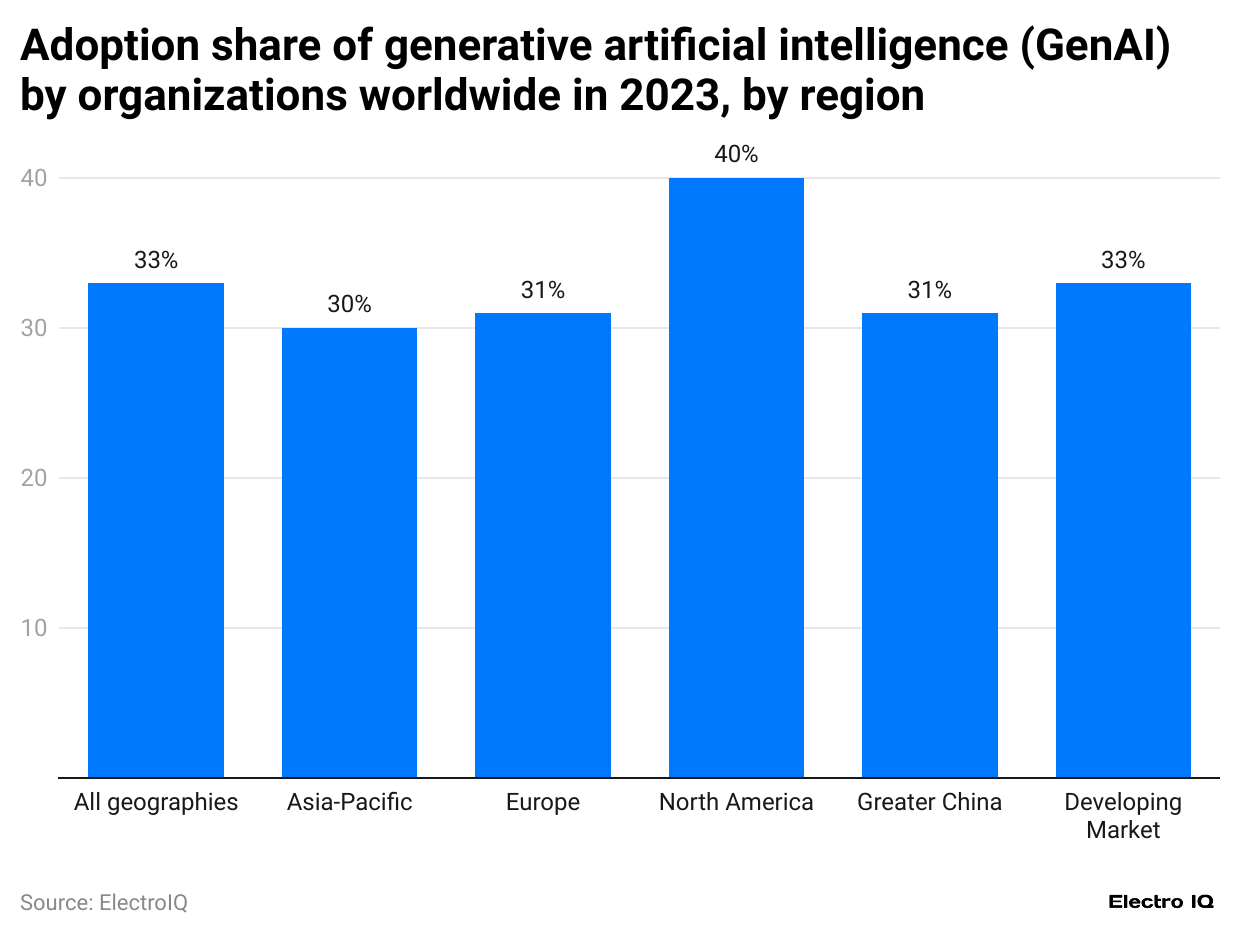
(Reference: statista.com)
- Digital Transformation Statistics show that all regions have 33% AI adoption per 33% of respondents.
- In North America, 40% of organizations have adopted AI in their business operations.
- In Developing Markets, 33% of organizations have incorporated AI into their business processes.
- In Europe, 31% of organizations are utilizing AI in their operations.
- In Greater China, 31% of organizations have adopted AI as a business strategy.
- In the Asia-Pacific region, 30% of organizations have implemented AI in their operations.
Objectives for Digitising Business Operations
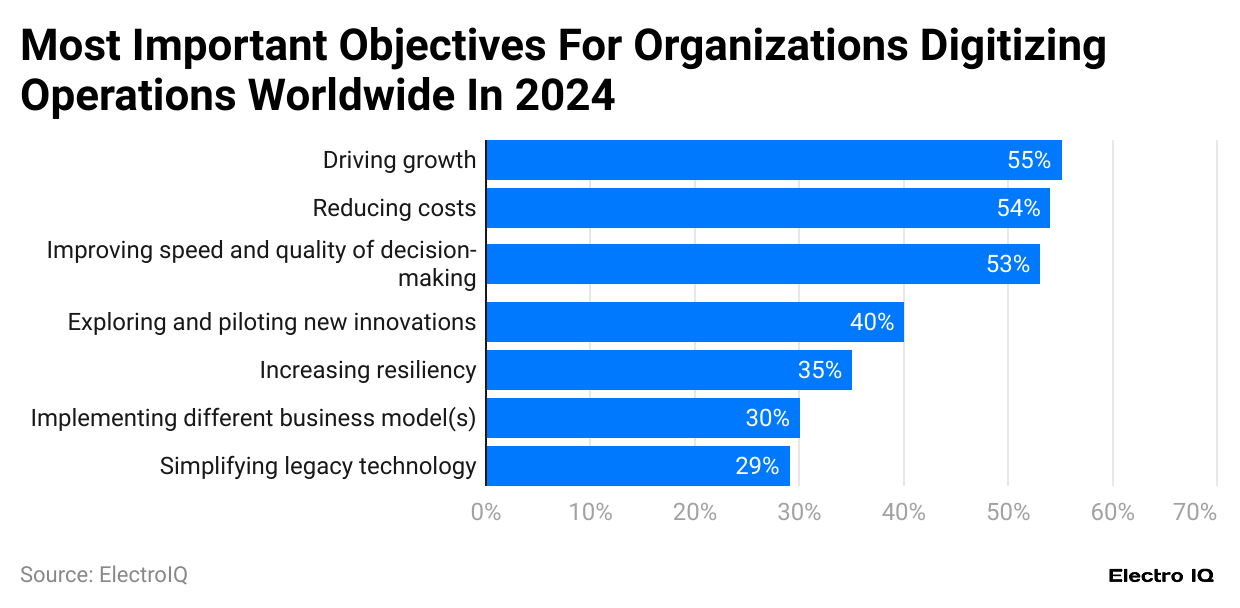
(Reference: statista.com)
- Digital Transformation Statistics show that driving growth remains the top motivator, according to 55% of companies.
- Reduction of cost is a motivating factor based on 54% of companies.
- Improving speed and quality of decision-making is a motivating factor based on 53% of companies.
- Exploring and piloting innovations is a motivating factor based on 40% of companies.
- Increasing resiliency is a motivating factor based on 35% of companies.
- Implementing different business models is a motivating factor based on 30% of companies.
- Simplifying legacy technology is a motivating factor based on 29% of companies.
Company Strategies For Skill Gap
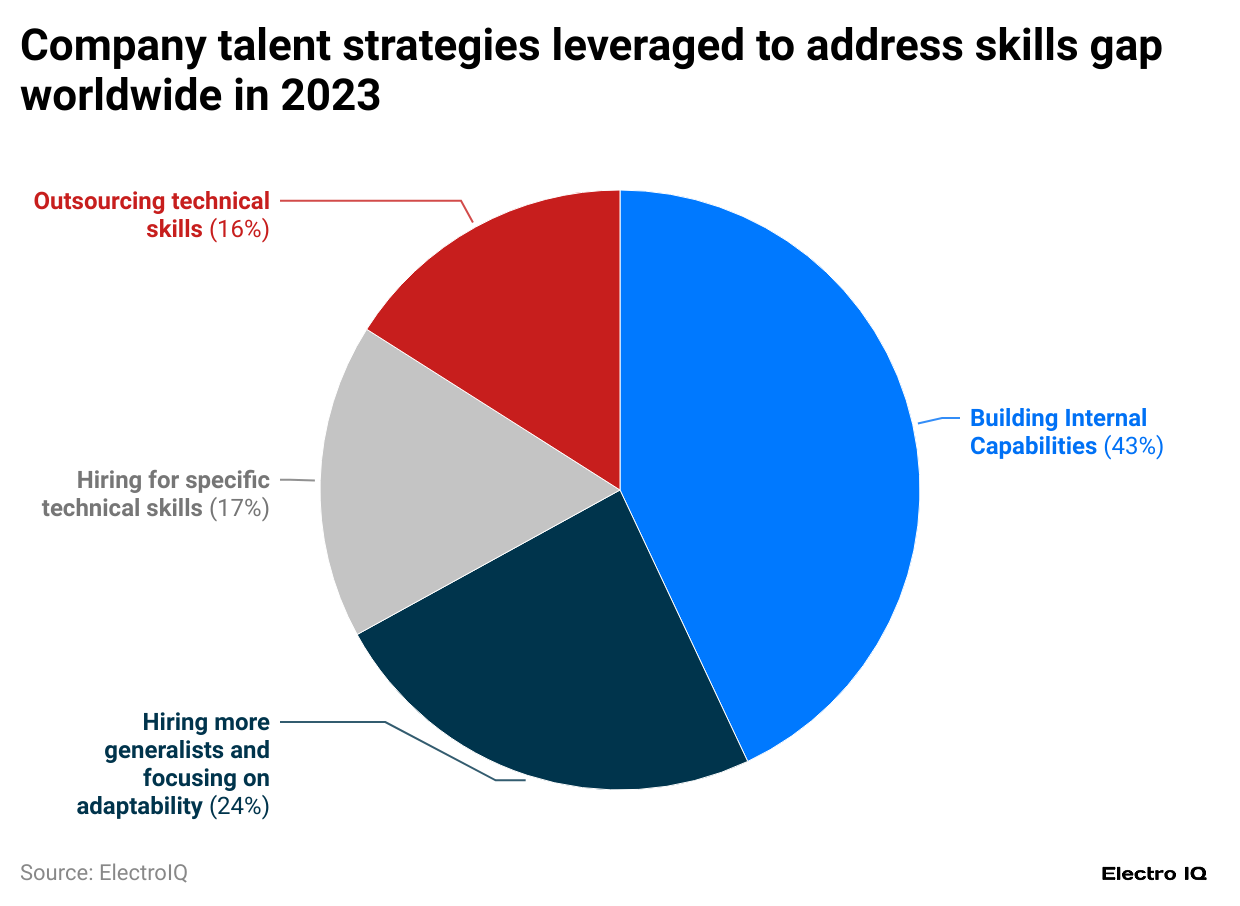
(Reference: statista.com)
- Digital Transformation Statistics show that building internal capabilities is the highest talent strategy implemented by the company to leverage skills, according to 43% of respondents.
- Hiring more generalists and adaptability focus on company talent strategy, according to 24% of respondents.
- Hiring specific technical skills is a popular strategy based on 17% of companies.
- Outsourcing technical skills is a talent strategy implemented by 16% of respondents.
IT Skills Demand With AI Rise
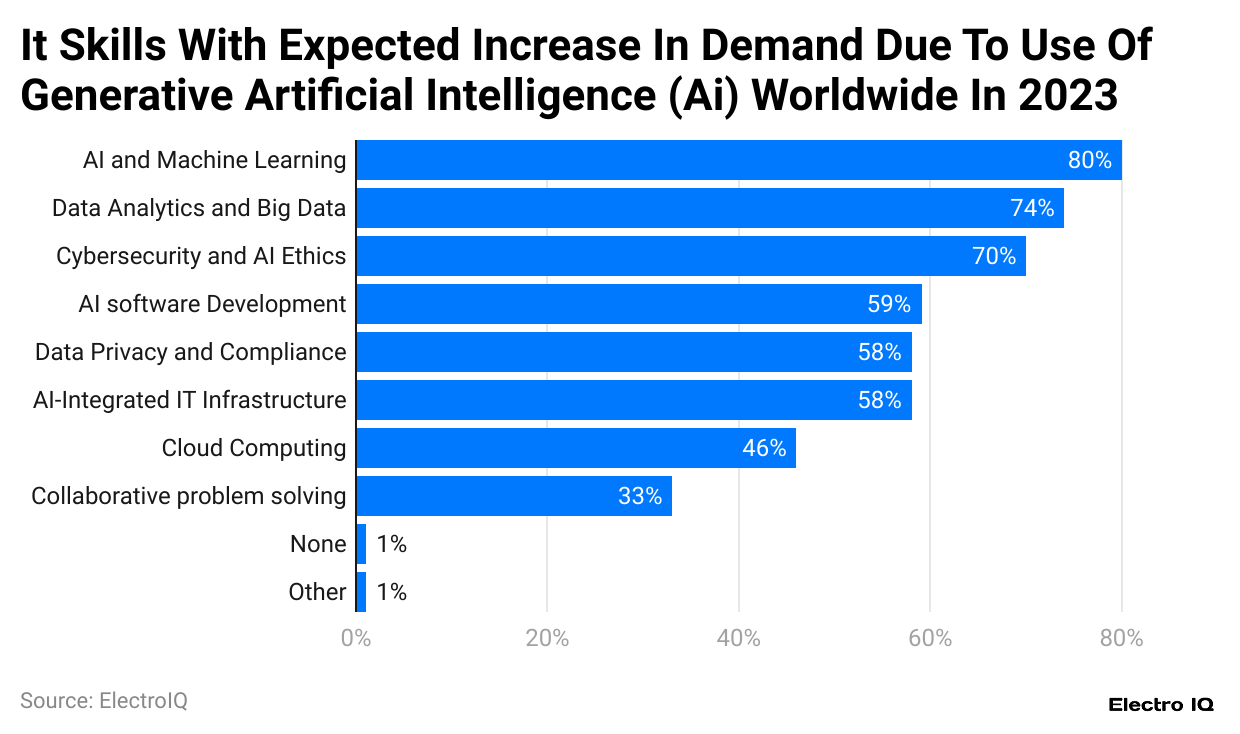
(Reference: statista.com)
- AI and Machine Learning are identified as the most crucial skills for the future by 80% of respondents.
- Data Analytics and Big Data are considered essential by 74% of respondents.
- 70% of respondents believe Cybersecurity and AI Ethics are critical IT skills.
- AI Software Development is deemed necessary by 59% of respondents.
- Both Data Privacy and Compliance and AI-integrated IT Infrastructure are essential according to 58% of respondents.
- 46% of respondents view Cloud Computing as a crucial IT skill.
- Collaborative Problem-Solving is seen as important by 33% of respondents.
- Only 1% of respondents view Other IT Skills or believe None are essential.
Data and Analytics Investment State
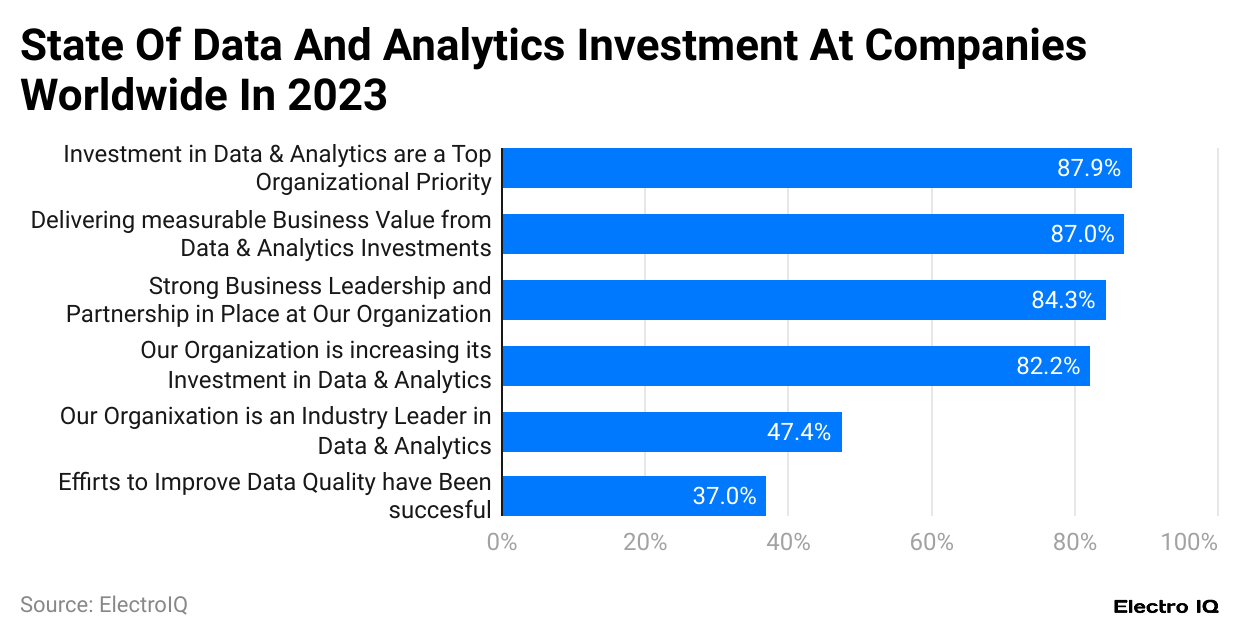
(Reference: statista.com)
- Digital Transformation Statistics show that investment in data analytics is a top priority per 87.9% of organizations.
- Delivering measurable business value from data is a priority among 87% of businesses.
- Strong business leadership and partnership are a priority among 84.3% of businesses.
- 2% of businesses are increasing investment in data and analytics.
- According to 47.7% of businesses, they are industry leader in data and analytics.
- According to 37% of respondents, there have been efforts to improve data quality.
Company Initiative on Digital Transformation
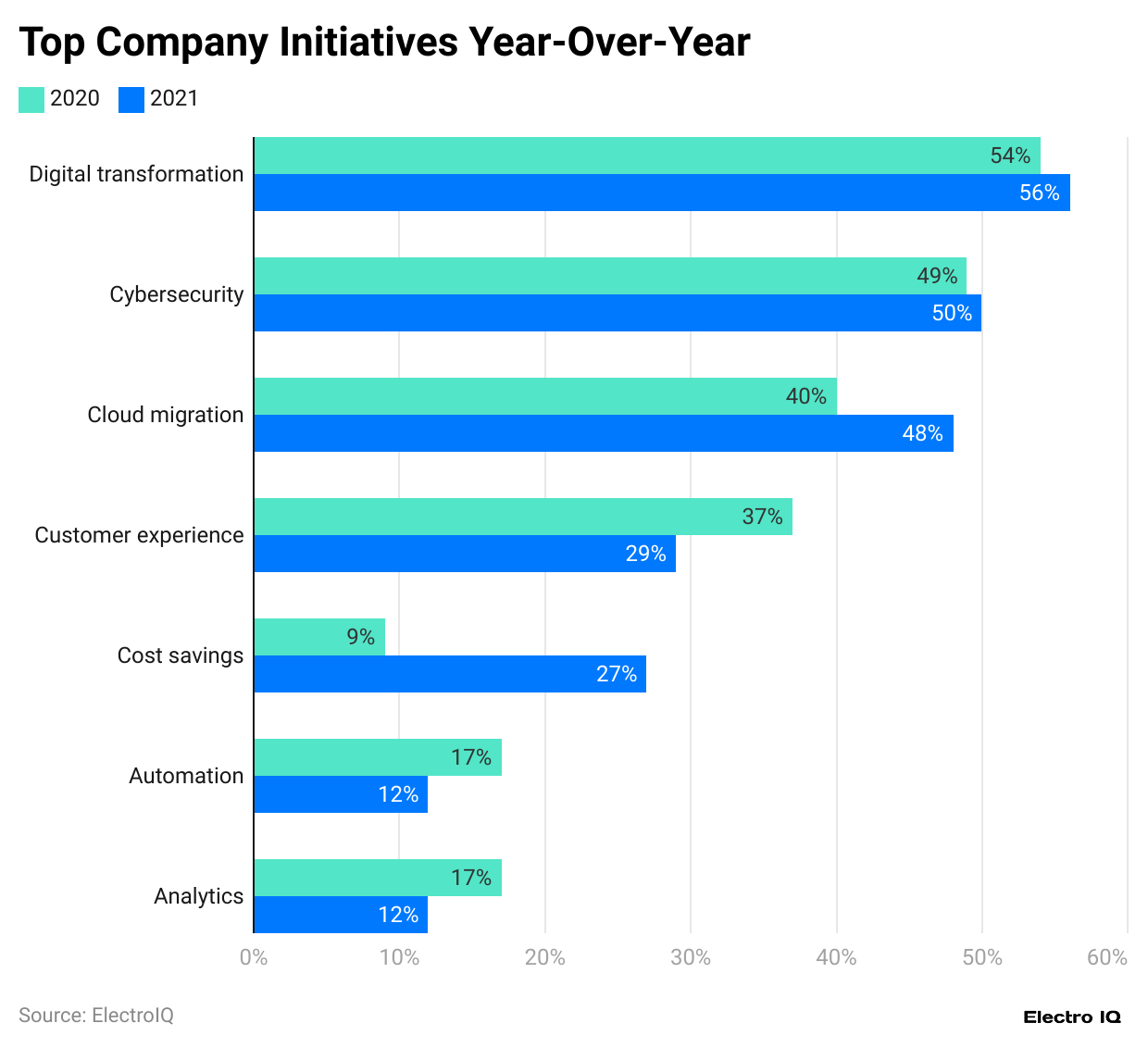
(Reference: zippia.com)
- Digital Transformation Statistics show that when looked at on a year-on-year growth basis, digital transformation has been a top priority among 56% of respondents as of 2021.
- Cybersecurity is a prominent company initiative, according to 50% of respondents.
- For 48% of respondents, cloud migration is a company initiative.
- Customer experience has emerged as a priority as per 29% of respondents.
Digital Integration Phase For US Companies
(Reference: zippia.com)
- 28% of respondents indicate that the digital integration phase for U.S. companies is currently in development.
- 19% of respondents report that digital integration is in the integrative phase.
- 18% of respondents state that digital integration has reached the execution phase.
- 17% of respondents note that digital integration is in the research phase.
- 11% of respondents mention that digital integration is still in progress.
- 7% of respondents say that digital integration is in the maintenance phase.
Digital Transformation Challenges
- Success Rate: A Boston Consulting Group (BCG) study revealed that only about one-third of organizations achieved their digital transformation objectives in 2021, although this was an improvement from a 30% success rate in 2020.
- Organizational Size Impact: According to McKinsey, larger organizations face more severe challenges in digital transformation, with companies having 50,000 or more employees being 2.7 times less likely to succeed compared to those with 100 or fewer employees.
- Skills Shortage: A survey by Veeam in 2021 found that 54% of IT professionals cited a lack of IT skills or transformation expertise as the biggest hurdle in digital transformation, followed by 53% mentioning dependency on legacy systems, and 51% dealing with recovery from the COVID-19 pandemic.
- Budget Allocation: Deloitte's analysis highlights that, on average, IT departments spend 56% of their budget on maintenance, while only 18% is allocated towards implementing new technologies. In contrast, organizations with advanced digital strategies allocate 47% for maintenance and 26% for innovation.
Conclusion
Digital transformation is no longer a choice but a necessity for businesses seeking to remain competitive in the rapidly evolving technological landscape. Digital Transformation Statistics reveal a consistent trend of increasing investment, technological adoption, and strategic shifts across industries. Companies prioritize digital initiatives to drive growth, reduce costs, and improve operational efficiency.
The data highlights the critical importance of skills development, particularly in AI, data analytics, and cybersecurity. As we progress, digital transformation will continue to be a key differentiator in business success.
FAQ.
A strategic process of integrating digital technologies to change business operations and fundamental value delivery.
From USD 0.96 trillion in 2017 to an estimated USD 3.9 trillion by 2027.
North America, with 40% of organisations adopting AI in business operations.
Cyber threats, skill shortages, economic uncertainty, and regulatory challenges.
Remote work has grown from 7% in 2015 to 28% in 2023, with the technology sector leading at 67.75%.
AI and machine learning, data analytics, cybersecurity, and AI software development.
Driving growth, reducing costs, and improving decision-making speed and quality.
Building internal capabilities (43%) and hiring generalists (24%).
87.9% of organisations prioritise data analytics, and 82.2% are increasing investments.
They are primarily driving growth, reducing costs, and improving operational efficiency.

Saisuman is a skilled content writer with a passion for mobile technology, law, and science. She creates featured articles for websites and newsletters and conducts thorough research for medical professionals and researchers. Fluent in five languages, Saisuman's love for reading and languages sparked her writing career. She holds a Master's degree in Business Administration with a focus on Human Resources and has experience working in a Human Resources firm. Saisuman has also worked with a French international company. In her spare time, she enjoys traveling and singing classical songs. Now at Smartphone Thoughts, Saisuman specializes in reviewing smartphones and analyzing app statistics, making complex information easy to understand for readers.

